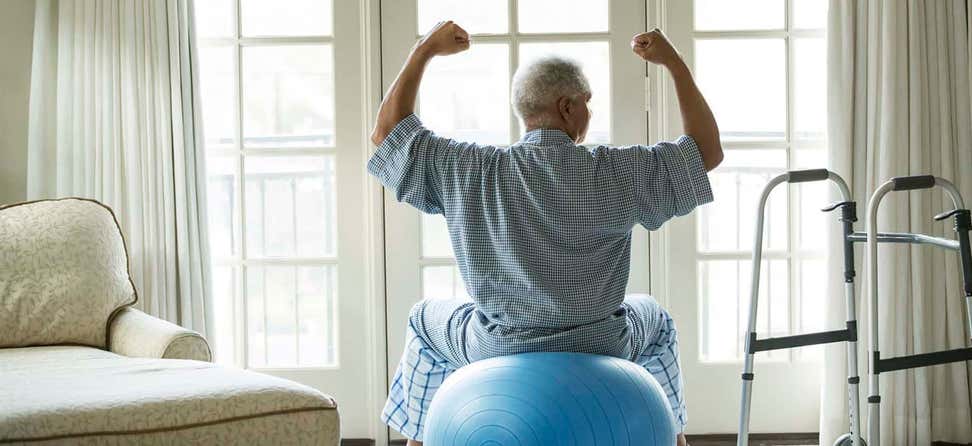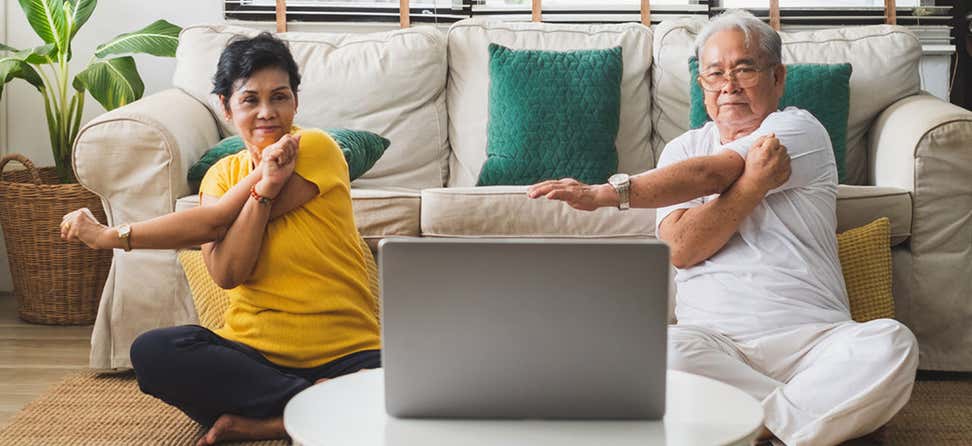Key Takeaways
Is your organization unable to offer group exercise classes right now due to stay-at-home measures?
It's important to make sure you continue to encouraging older adults to stay active and continue strength building even while they're home.
Here are a few tips and resources when communicating with a loved one or client on the importance of staying active during the COVID-19 pandemic.
Your organization may not be able to offer group exercise classes during the COVID-19 outbreak, but it is important to encourage older adults to stay active and maintain gains in strength, balance, and flexibility that reduce fall risk, strengthen the immune system, and improve quality of life.
Older adults may be concerned about their safety as they prepare to exercise at home, but research has shown that the risks of exercise at home are no greater than exercising in a group setting. Use these tips and resources when communicating with older adults about the importance of staying active during this time.
- Encourage Activity! If older adults are already engaging in outbreak-appropriate physical activity, tell them to keep it up! Exercise is key to healthy aging. It’s important to keep exercising to strengthen their immune systems and maintain their fitness. The National Physical Activity Guidelines recommends engaging in 150 minutes of moderate-intensity physical activity a week.
- Sit Less. Move More. Use this infographic to help older adults identify ways to move more and sit less during the day. For example, get up during every commercial on TV and do an active chore or march in place. If possible, taking a walk outside is a great way to stay active and enjoy the benefits of fresh air and sunshine.
- Move Your Way. If older adults are too busy for exercise, they can get stuff done and stay physically active at the same time. Physical activity isn’t a chore if you make chores physical activity! Use this infographic and video for tips on how to make everyday tasks more energetic.
- Practice all 4 Types of Exercise: Use this infographic to remind older adults to practice all 4 types of exercise for the most benefits. Offer examples of each type of exercise for endurance, strength, balance, and flexibility.
- Stay Safe During Exercise: Exercising at home, with appropriate exercises and guidance, is generally safe and healthy. Offer reminders to help older adults to stay safe such as:
- Listen to your body. Always warm up before exercising and cool down afterward. Gauge your level of effort with the “talk test”. You should be exercising at a level that allows you to talk, but not sing.
- Be aware of your environment. Make sure you are in reach of a counter, back of a couch, or a sturdy chair that is pushed up against a wall in case you lose your balance and need to hold on to something. It may also be helpful to put a chair/couch behind you in case you need to sit or lose your balance.
- Hydrate. Drink water before, during, and after exercising, even if you don’t feel thirsty.
- Wear appropriate shoes and clothing. Choose shoes that are made for the type of activity you want to do and choose clothes that work with your activity and the temperature of your environment.
- Stay Motivated! Exercise is good for almost everyone, yet it is hard to fit exercise into our daily life. These tips can help older adults overcome common barriers to exercise and get moving to improve your health. Participate in a group exercise class online, such as the Go4Life Workout Videos.










